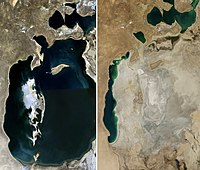
Photo from wikipedia
In this paper, we present the imaging formation process of the piecewise mirror eyes of the deep-sea spookfish, which has a strange combination of refractive and reflective eyes. The biological… Click to show full abstract
In this paper, we present the imaging formation process of the piecewise mirror eyes of the deep-sea spookfish, which has a strange combination of refractive and reflective eyes. The biological reflective eye structure is formulated to the curved surface's flat mirror array. Zemax is utilized to evaluate optical features such as the modulation transfer function, distortion, and imaging performances. However, the natural images are highly distorted, and the resolution is lower than expected. Therefore, we increase the number of piecewise mirrors of the fisheye to see higher quality images, which can be improved entirely by the mirror shapes. Finally, the fisheye's imaging analysis reveals the deep-sea creature's resolution limit and also shows the possibility of artificial and biomimetic camera applications.
Journal Title: Applied optics
Year Published: 2021
Link to full text (if available)
Share on Social Media: Sign Up to like & get
recommendations!